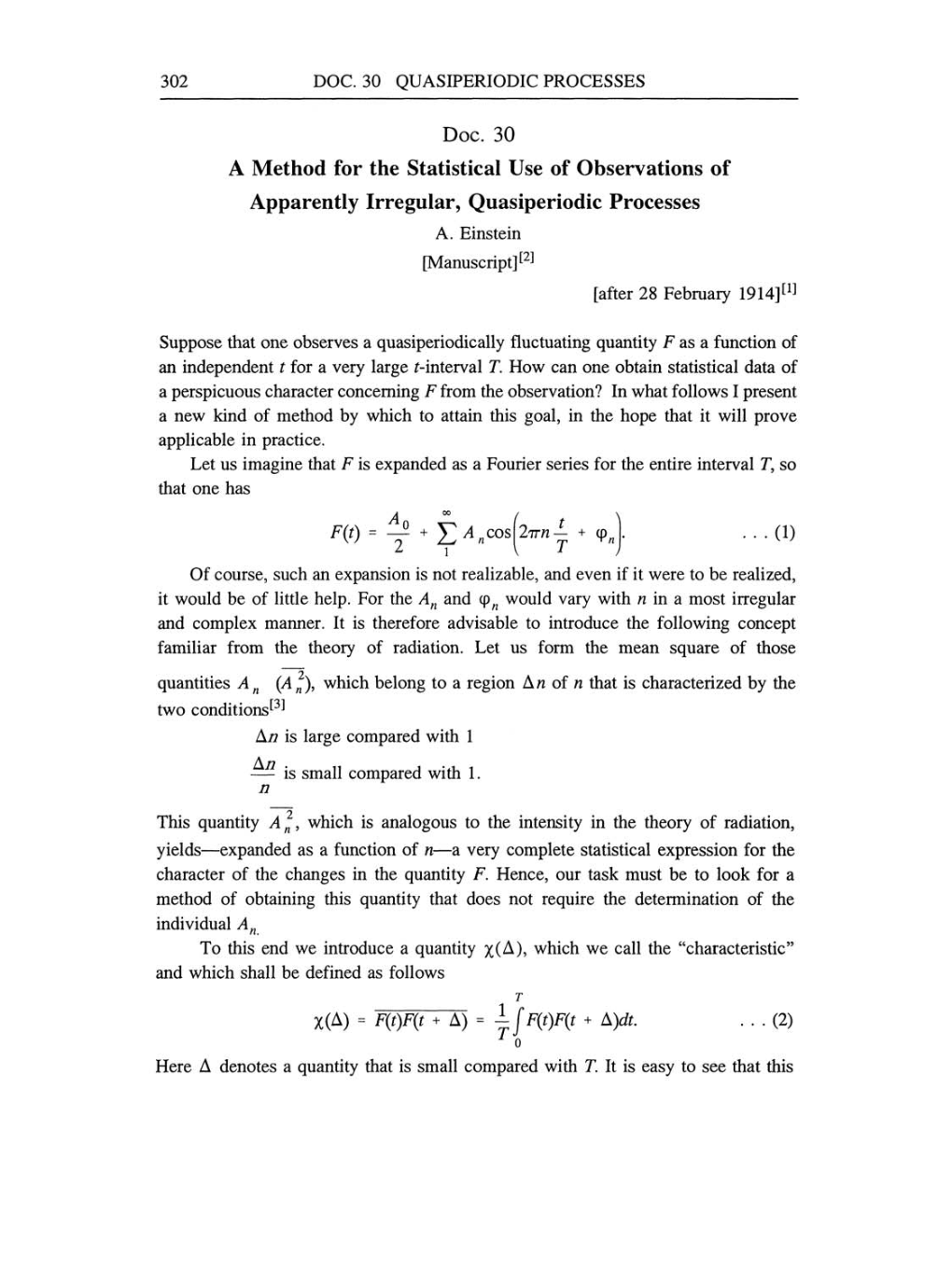302 DOC.
30
QUASIPERIODIC
PROCESSES
Doc.
30
A
Method for the Statistical
Use
of Observations of
Apparently
Irregular,
Quasiperiodic
Processes
A.
Einstein
[Manuscript][2]
[after
28
February 1914][1]
Suppose
that
one
observes
a
quasiperiodically fluctuating quantity
F
as a
function of
an
independent
t
for
a
very large
t-interval
T.
How
can one
obtain statistical data of
a
perspicuous
character
concerning
F from the observation? In what follows
I
present
a new
kind of method
by
which
to
attain this
goal,
in
the
hope
that it will
prove
applicable
in
practice.
Let
us
imagine
that F
is
expanded
as a
Fourier series for the entire interval
T,
so
that
one
has
F(0
=
+
£
An°°S 2jTn^ +
V/i
Z
1
/
...(1)
V
T
Of
course,
such
an
expansion
is
not
realizable,
and
even
if
it
were
to
be
realized,
it
would be of little
help.
For the
An
and
pn
would
vary
with
n
in
a
most
irregular
and
complex manner.
It is
therefore advisable
to
introduce the
following concept
familiar from the
theory
of radiation. Let
us
form the
mean
square
of those
2
quantities
An
(An2),
which
belong
to
a
region
An of
n
that
is
characterized
by
the
two conditions[3]
An
is
large compared
with
1
An/n
is
small
compared
with
1.
This
quantity
A2n,
which
is
analogous
to
the
intensity
in
the
theory
of
radiation,
yields-expanded
as a
function of
n-a
very complete
statistical
expression
for the
character
of the
changes
in
the
quantity
F.
Hence,
our
task
must
be
to
look for
a
method of
obtaining
this
quantity
that
does
not
require
the determination of the
individual
An.
To this end
we
introduce
a quantity
x(A),
which
we
call the "characteristic"
and which shall be defined
as
follows
T
X(A)
=
F(t)F(t +
A)
=
I
f
F(t)F(t + A)dt.
...(2)
0
Here
A
denotes
a quantity
that
is
small
compared
with
T.
It
is
easy
to
see
that this
